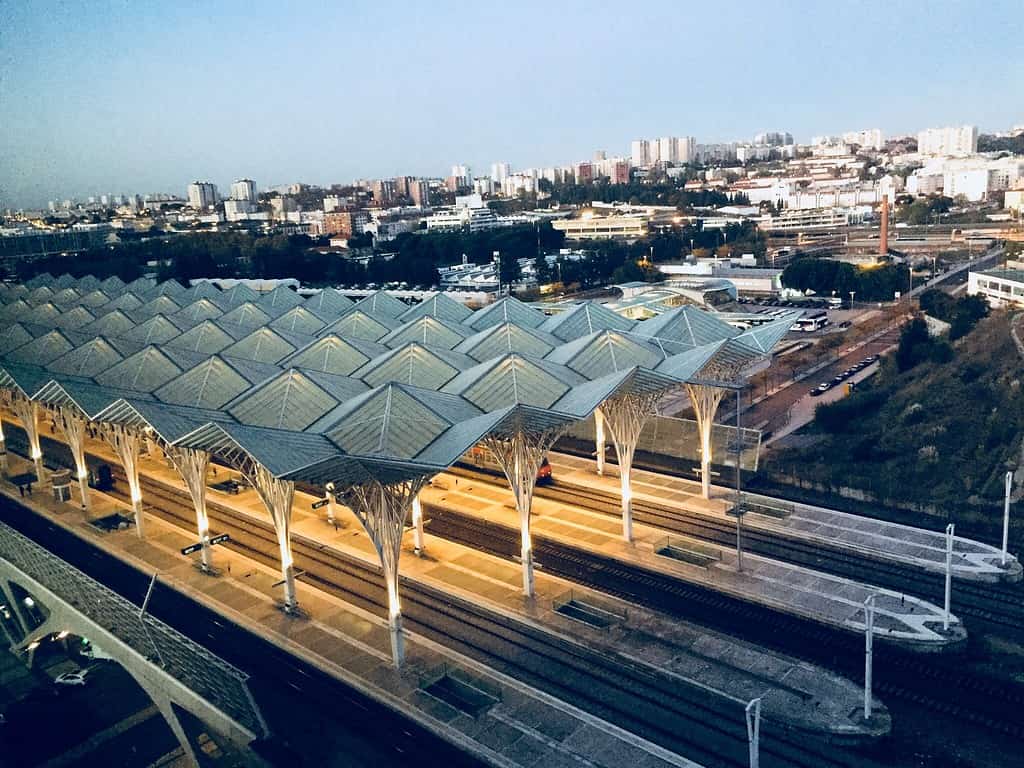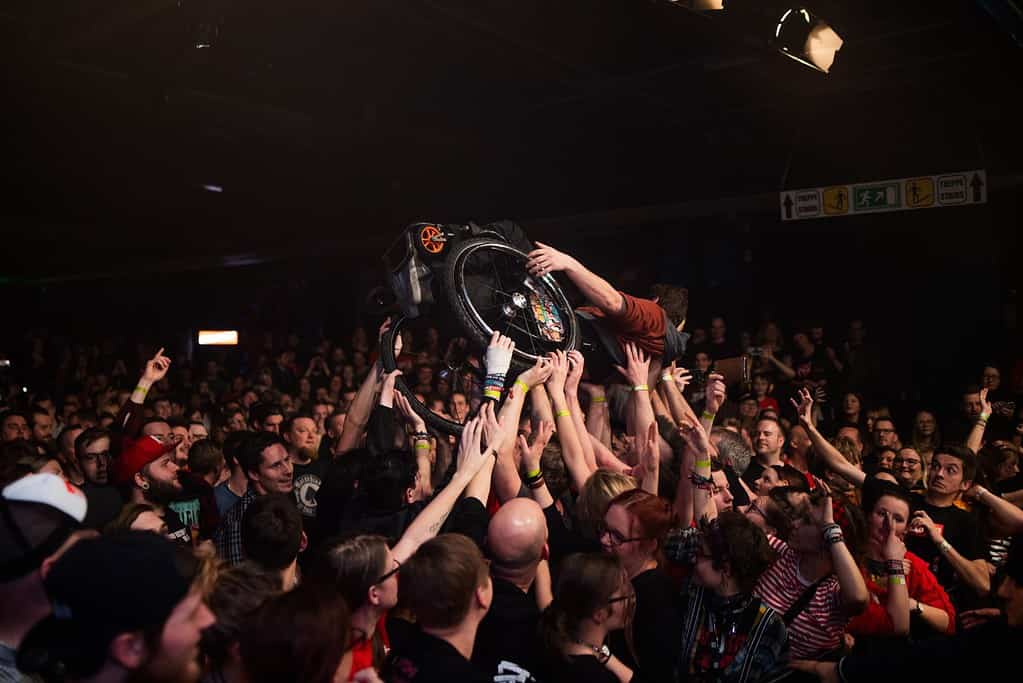12 Lessons From Running a Full-Day Online Conference

Introduction
The coronavirus pandemic has been with us for the past few months. Software conferences all over the world are either canceled, postponed, or moved online. I had three major conferences where I was supposed to speak, which got canceled.
In addition to speaking at various conferences, I organized one major conference for the past couple of years — “Architecture Next.” It ran the risk of cancellation as well. However, together with my colleagues, we decided to run the conference nonetheless, and move it from a physical setting to a virtual one.
Unlike organizing physical conferences and meetups, this was the first time I hosted an online conference. I knew we were sailing into uncharted territory for us. Nevertheless, in hindsight, we had a very successful conference with more than 1,100 registrants and more than 500 attendees and minimal technical glitches.
In my opinion, the most critical aspect of running this conference as smoothly as possible, was the meticulous planning that the team performed beforehand. That’s why I decided to write this article. Its purpose is to share with you what worked and what didn’t work at our conference to make your online conference experience go as well as possible. Online conferences are becoming the norm these days, and I don’t see them going anywhere anytime soon. So let’s get to it.
The Content

“Content is king.”
This saying was true at the time of in-person conferences, and it’s just as accurate today. Any conference should have a vision and a target audience, and it should strive best to serve that audience via the selection of content.
At “Architecture Next,” our target audience was software architects and technical decision-makers such as tech leads, executives, etc. Our agenda is to focus on new and upcoming technologies and methods, and that was what we focused on during our Call for Speakers phase.
Without good content, it doesn’t matter how technically competent your conference is. Focus on your audience, get great speakers, and everything else should follow.
Conference Structure

When building the schedule, we faced the following question: should we split the conference to several consecutive days and hold each track separately? Or should we keep a single-day conference format with multiple parallel tracks?
Each of these approaches has its pros and cons. When you have a physical venue, each additional day can have high costs since you need to pay for the site, the food, etc. On the other hand, you can allow attendees to join more content as there are more available time slots. When attendees are arriving from afar, this makes a lot of sense. The additional per-day costs are suddenly gone when going virtual, so at first, it seems like having a multi-day conference is the better choice.
However, running a single-day conference with multiple tracks allows us to focus all the marketing effort on a single day. This way, you can get a lot of hype from the overwhelming amount of attendees joining at once. Also, since the conference is online, recording the sessions and making them available for your attendees later is much easier than doing it in a traditional session. Besides, our attendees could easily switch between concurrent tracks and get more value out of their time than if the conference was spread over multiple days.
Indeed, running multiple tracks concurrently on a single day is more technically challenging as it requires having more online moderators. However, I believe that the benefits far outweigh the challenges, and indeed our users seamlessly switched between channels the find the content that was best suited for them at any given timeslot.
Session Length

In the past, most traditional conferences set the standard session length somewhere in the range of 45–75 minutes per session, with a 45 to 60-minute session probably being the most common format. At first, online conferences followed the same pattern.
Then, at Microsoft Build, Microsoft’s annual developer conference, which was virtual this year, tried something new. Each session was only 30 minutes long. Fifteen minutes of the time was devoted to a presentation, while the remaining time was comprised of Q&A.
At first, I was quite skeptical of this format since there is a limit to the amount of technical content one can deliver in 15 minutes, but it worked! Sessions were kept short and focused, and it was a breeze watching so many sessions during a single day. In contrast, having an attendee focus on a presentation for 60–75 minutes in front of a screen is very hard, and many attendees will probably not make it to the end.
So what did we do for our schedule? We settled on the middle ground. Each session was 45 minutes long, followed by a 15-minute break. However, presenters were asked to limit their presentation to 35 minutes and allow ten more minutes for Q&A. For most sessions, it worked well. The audience didn’t leave before a session was complete, and the Q&A section was highly successful. In my opinion, with some sessions, the audience was more engaged than in regular in-person events. Perhaps the fear of publicly asking a question is slightly removed in an online setting.
My key highlight here is to keep the sessions focused (no more than 35–40 minutes), not including Q&A, and always leave time for the audience to engage. This engagement is the main benefit that the audience has over watching the recorded session later on YouTube.
Live vs. Recorded Content

The above point about audience engagement leads me to the next topic. One of the primary debates I see around online conferences is whether sessions should be recorded or streamed live. In my opinion, live streaming the session is a far superior choice. I reason that if the entire session is recorded, then the audience can just as well catch it on YouTube later or on some other video-on-demand platform that you offer. There is no motivation to join the session “live.”
When you live-stream the session, the audience feels more connected to the presenter even if members of it don’t directly engage using Q&A or another mechanism. The mere fact that the presenter is currently devoting his or her time to the audience has a very positive effect on all attendees. It’s true that live sessions are more complicated and are more prone to technical errors; however, that’s part of the magic. As long as technical issues are kept at a minimum and the day progresses well, having live sessions is a huge win.
Even while live streaming, presenters can include recorded clips within their sessions. This is especially true for complex demos that have a high chance of going wrong when presented live. Since the sessions should be kept short anyway, recording complex demos can significantly reduce risk, while still maintaining the “live” aspect of the rest of the session.
If you still prefer playing recorded content, always leave a live intro into the content and a live Q&A with the presenter at the end. In my view, this is the minimum one can do to thank the audience for attending. However, live streaming, in my opinion, is the best.
The Platform

After finalizing your strategy, the next step is to choose a broadcast platform. Here, you’ll have several options.
Video conference software
You can use a conference call platform that allows all attendees to chat and show their audio and video, much like a regular online call. Examples include Zoom and Microsoft Teams. This method is best suited for relatively small conferences where you want to get the community vibe.
The most significant advantage is that the audience feels more engaged than the other methods, and it has the most similar effect to an in-person gathering where everyone can see and be seen. However, this approach’s drawback is that you, as the organizer, have no control over who can unmute themselves or share a video feed, and you never know what they will present.
At an in-person event, there is only a small chance that an attendee will disrupt your event. Yet, at an online event, under cover of anonymity, the likelihood of such interruptions significantly increase, especially when a large crowd is present.
Since you want to keep your attendees safe from phenomena such as Zoombombing, using this type of interaction for an online conference can be challenging. But, this is an excellent tool for a smaller community meetup and the best replacement for in-person attendance.
Online webinar software
The next option is to use software meant for online webinars. These solutions can typically handle a more significant number of participants and provide the organizer with various options to control attendee permissions, thus eliminating the possibility of harassment by attendees. Microsoft Teams Live Events and Zoom Webinar are two of the available options.
The downside to this solution is that typically the interaction becomes a one-to-many interaction instead of many-to-many. In this type of interaction, the audience members cannot communicate freely with each other and instead can only communicate with the host.
As a result, each attendee might feel “alone” in the app instead of having a community or large gathering vibe to it. If you choose this path, I highly recommend augmenting it with a solution for audience networking (see the “Audience Engagement” section below).
For “Architecture Next,” we chose to use GoToWebinar as our streaming platform due to others’ recommendations. In hindsight, we were pleased with the platform as it was relatively easy to operate, had only minor technical glitches during the day, and provided an overall good streaming experience.
Live streaming platform
Another option is to use a public live streaming service such as YouTube, Facebook, or Twitch. Using this option eliminates much of the friction of joining a session, and some platforms, such as Twitch, allow a high degree of communication between attendees. However, using these platforms has the cost of reducing the connection that you, as the organizer, have with your attendees. For some conferences, it might be a valuable solution, though.
No Registration Cap

When running an in-person event, you have a physical limit to the number of attendees — the session rooms’ sizes. However, one of the advantages of going virtual is that this limitation is no longer a barrier. You can accommodate any size of gathering! However, do note that there is a caveat here — the license of your streaming platform might impose some limits.
Often enough, to host more attendees, you need a more expensive license. If possible, defer the decision on which license to purchase as close to the event as possible, when you have more information regarding the expected attendance. For example, at “Architecture Next,” we waited until a week before choosing and buying the exact license we needed.
Don’t forget, though, that the number of attendees is much lower than the number of registrants free to attend events. So take it into account and plan accordingly. In my experience, typical attendance rates fluctuate between 20% and 50%, depending on geography and local culture.
Hassle-Free Session Switching

One of the critical aspects of running a successful online conference is reducing attendee dropout during the day. Several conferences that I participated in required their users to follow a different link for each session. That’s quite cumbersome. Think about it — if you just got your users to leave the room, they have one more barrier to rejoin, so why would they bother? Imagine that you would force your users to leave the room after each session in an in-person conference, even if their next session is right there. It makes little sense.
The solution we used was to run each track in its own continuous channel. This way, the three tracks acted as television channels, where users could flip between them. As long as users wanted to stay in a particular track (or room), they didn’t need to do anything. As a result, staying within the conference turned into a more comfortable choice to perform, thus reducing dropout.
Moderate and Host Sessions

It’s hard for presenters to follow the stream of questions from the audience as they come in. At “Architecture Next,” we had a host/moderator for each session. His/her job was to introduce the speaker, monitor the audience questions during the session (while answering some in the chat window if possible), and finally ask the most important questions at the end in an interview-like manner.
This audio conversation between the two captivates the crowd and makes them stay longer, as interviews are more engaging than a single person talking.
Having this format allows the audience to feel that they are part of the session, that their voices will be heard at the end, and gives them something to look forward to.
You should prefer that these moderators won’t have too much responsibility on their hands at the same time other than to moderate. For example, I moderated one of the tracks and spoke at other tracks and had overall responsibility for the conference, and it was very challenging.
Preparing Questions

There are only so many things that are more awkward than leaving ten minutes for Q&A and not receiving a single question from the audience. If a session goes well and you have many attendees, you probably won’t have a problem. However, if you have fewer attendees or the session was less successful, awkward silence can occur.
My recommendation is to ask every presenter to send 3–5 questions about their session beforehand. These questions can then be used as a backup by the host if there is not enough audience participation. Starting with one “pre-made” question can even trigger additional “real” follow-up questions from the audience, and from there, you can continue as usual. Don’t give up on this. You’ll thank me later.
Dry Runs

Content dry runs
Practice makes perfect. If possible, have at least one dry run with each of your presenters. Even presenters that are accustomed to large in-person events may struggle with the online format. Feedback is always welcomed. These dry runs will be noticeable on the day of the event as the presentations themselves become more coherent and are timed to fit the allotted slot. All the presenters I had the honor of performing their dry runs had undoubtedly improved their performance.
Of course, this is not always possible with all speakers and events but is highly recommended, even for experienced speakers.
Technical dry runs
Unless your speakers and moderators are well versed with the streaming platform you chose, having multiple dry runs where speakers can try it and get familiar with all the controls is crucial for avoiding technical glitches on the day of the event. If possible, have speakers connect to the platform and use the same hardware they’ll use for the event to reduce risk even further.
Audio-Video Equipment

Never underestimate the importance of proper audio and video quality. Having a lousy stream reflects poorly on your conference, and might cause attendance to drop. Another culprit can be insufficient upload bandwidth from your presenters’ locations.
Check with your presenters regarding the type of equipment that they have and test it if required. You don’t need to buy radio quality audio equipment and invest a ton of money. Nevertheless, you should also avoid the built-in microphone on your laptop or webcam. A decent modern webcam and a good quality USB headset will take you a long way.
Audience Engagement

Social networking
One area where an online conference clearly lacks against its in-person counterpart is around audience engagement and networking. At an in-person event, there are various opportunities for the audience to get to know each other, talk to speakers 1-on-1, meet new friends, etc.
While this problem has not been solved yet, we tried to use Discord for audience networking at our conference. Discord is a chat service that originated from the gaming world and is similar to Slack. We chose to use Discord as it is less formal than Slack, and that’s the experience we wanted to give to our attendees. There is even a good server template to get you started.
We invited each attendee to join our Discord server, where attendees could converse with each other and discuss various items with the speakers who were also available on the platform for chats. We created a channel for every track, and at the request of the audience during the day, we even created a dedicated channel for job seekers and job openings. Overall, the experience was a successful one though there were two unresolved issues:
- The Discord chat was not integrated with the streaming platform and required users to have two separate windows/tabs open in parallel. This requirement is not ideal and does not put audience engagement at the forefront.
- Many of the target audience did not have a Discord account since they were not gamers, which acted as a barrier for entry. They also needed to learn how to use the platform. Slack might have been a better match since it is likely to assume that most of our target audience is already familiar with it.
This issue is an item that we’ll have to consider for future conferences.
Presenter breakout room
For me, it looked like the ten minutes of Q&A at the end of each session was often not enough, and we had to stop without answering all the questions. At an in-person conference, attendees can simply walk up to the stage and talk to the presenter, and they can even walk to the lounge where the discussion can continue. We didn’t have an equivalent experience for this. I think that we should have some sort of breakout room where interested members of the audience can have an audio-video chat with the presenter following the session. We’ll have to put more thought into this, and any ideas and suggestions would be welcomed.
Conclusions

Organizing community events is a lot of work. But it’s fun and it’s essential. Knowledge sharing is one of the most important things that we can do as professionals, and conferences are significant.
I hope that this article gives you some insight into what it’s like to organize an online conference. This conference was the first time I ever hosted such an event, and I hope that my learnings can serve others. If you have any additional thoughts, I welcome them in the comments below.
Will conferences remain virtual after we win the fight against coronavirus? Will online conferences become the new norm? What will I do for my next conference after COVID-19 is behind us? I don’t know yet, but I’m pretty sure that we’ll have a mix of both styles as every type of event has its advantages. One thing I know for sure is that nothing beats speaking to a large crowd, whether online or in-person. Thank you for reading, and see you at the next event.


